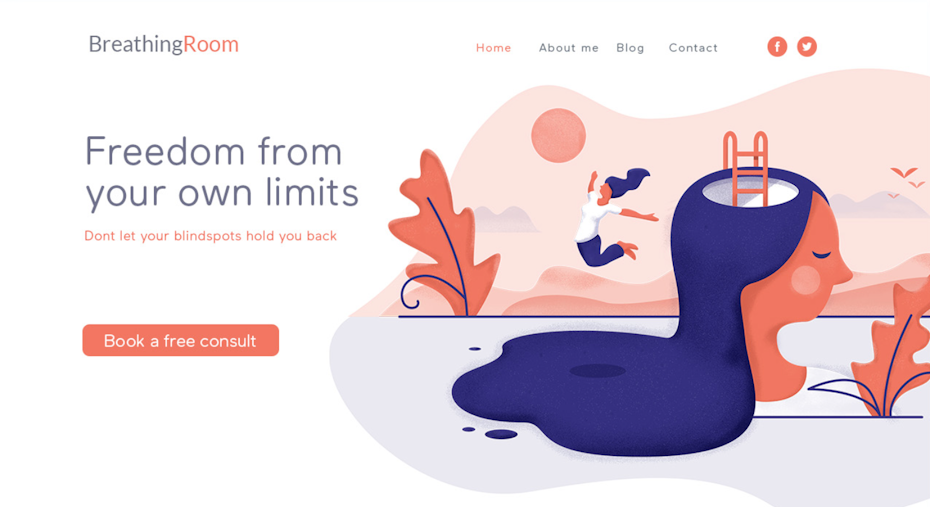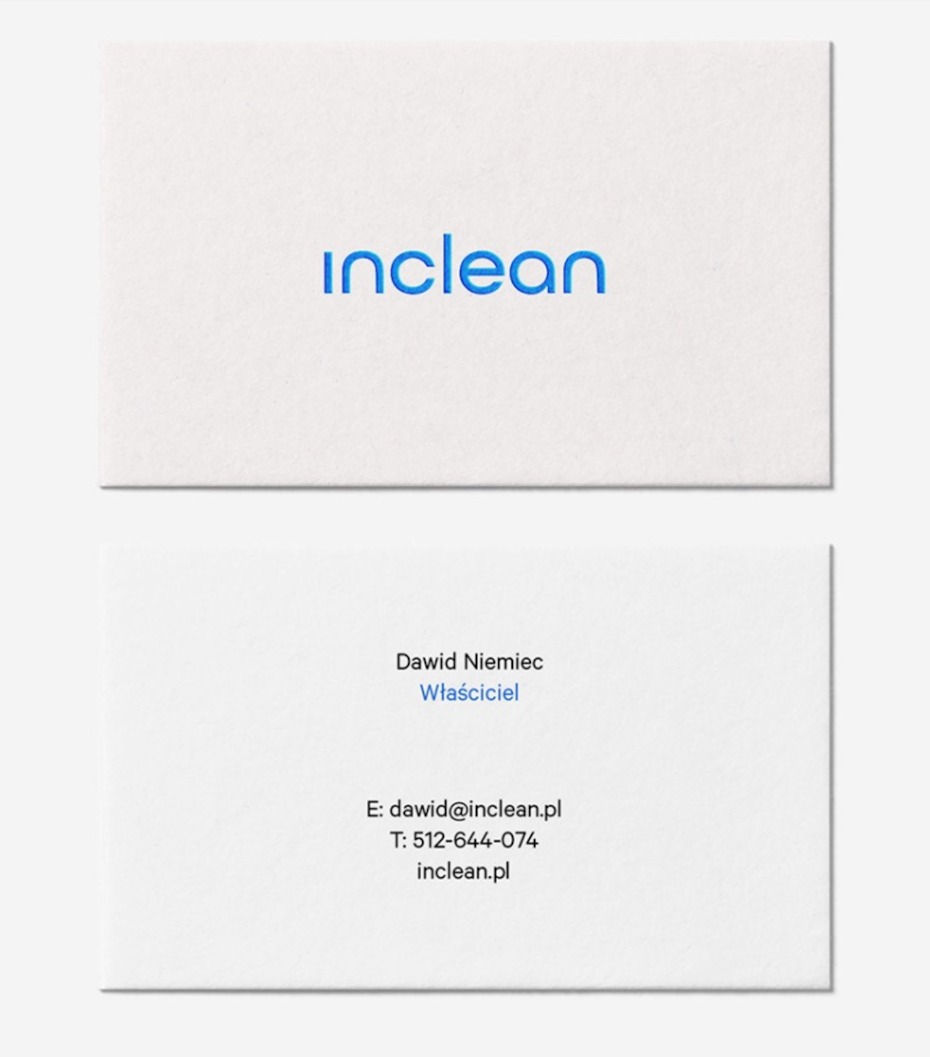Drawings With Asymmetrical Balance Drawings With Harmony Through a Repeating Art Element
Successful graphic designers know that mastering the visual concept of balance is the key to effective communication. When your designs achieve balance—which can happen with both symmetrical and asymmetrical designs—they'll reach greater harmony, and your audition volition use less energy taking in the data.
Understanding symmetry vs. asymmetry isn't difficult, only getting it just correct tin can be tricky at get-go. That's why we're going to go through a few examples to ensure everything is crystal clear.
What is visual balance? And what is symmetry?
—
Symmetry and balance are related. Simply they're not quite the same affair. Accept a expect at their definitions:
Symmetry is the visual quality of repeating parts of an epitome beyond an axis, along a path or around a eye.
Disproportion, on the other hand, refers to anything that isn't symmetrical.
Balance is the visual principle of making a pattern appear equally weighted throughout the composition.
Residue measures the visual weight of your composition, which impacts how much each element attracts your audition's attention.
There are four basic ways to achieve balance:
Symmetrical balance
Symmetrical balance occurs when your limerick has the same visual weight on each side of an centrality. Imagine perfect mirror images looking at each other around a central axis.
This blazon of balance evokes gracefulness and simplicity. It'due south pleasing to wait at, but likewise very predictable.
Asymmetrical remainder
A composition with unequal weight on both sides has asymmetrical residuum.
More visually interesting than its symmetrical counterpart, this visual technique has a big focal indicate on one side with several, less meaning focal points on the other.
Radial balance
When visual elements radiate out of a common middle point, this is chosen radial balance. Imagine rays of sunlight emanating from the sun.
Mosaic residue
Recall of mosaic balance as organized chaos that might await like dissonance, but actually creates residue thanks to the absence of a distinct focal point.

Each element shares a common emphasis, and no single element dominates the composition.
The different types of symmetry and disproportion
—
Balance is the key to bully design, simply symmetry is one of the tools you lot can use to get there. Here's a quick wait at the iv types of symmetry.
Reflectional symmetry
Imagine taking an apple and cut it in half. Both sides are mirror images beyond a centre line, and this is reflectional symmetry.
Too known every bit bilateral symmetry, you'll find this technique used vertically, horizontally or diagonally.
Reflectional symmetry can be perfect symmetry, significant both sides of the prototype are identical. Notwithstanding, many instances—a face, for example—volition feature subtle differences on each side.

Translational symmetry
Think of the aforementioned shape repeating itself over and over over again.
This is translational symmetry—when visual elements repeat across a location in space. This repetition can happen for any length or in any direction.
Rotational symmetry
Imagine a car'south moving wheels and spinning windmills, and you've got rotational symmetry.
Likewise known every bit radial symmetry, this technique features all visual elements rotating effectually a center at any bending. This type of symmetry is ideal for capturing a sense of motion, dynamic action or speed.
Glide reflectional symmetry

Nosotros've all seen footsteps in the sand or snow. Think about how each step produces a reflection of the reverse foot, but considering of movement, each footprint doesn't line up with the other.
Glide reflectional symmetry is a play on reflectional symmetry, merely it involves a shift in the position of each mirror prototype. Like rotational symmetry, it also conveys a sense of moving forward.
Asymmetry
If a composition doesn't fit into the above categories, information technology's probably asymmetrical.
As a designer, asymmetry both challenges and helps yous. Balanced, symmetrical designs are typically more engaging considering our eyes find them naturally more interesting and attractive.

Y'all have to piece of work a little harder to achieve remainder with asymmetrical visual elements, but you'll also have the liberty to experiment with unexpected patterns and forms, in a mode yous simply can't with symmetry.
Examples of remainder in graphic pattern
—
The best mode to larn about rest is to wait at a few real globe examples of symmetry and disproportion in action.
Logos
Airbnb
The Airbnb logo is an example of pure reflectional symmetry.

If y'all describe a vertical line right down the middle, both halves are perfectly the same. To create reflectional symmetry like this, use elementary shapes and go for a minimalist logo that doesn't have many complicated parts to it.
Google's wordmark is an example of asymmetrical balance.

The beginning three messages are noticeably wider than the last three letters, creating a sense of greater visual weight in the showtime one-half of the wordmark.
Spider web pattern
Apple tree
Apple tree'south Mac webpage gives u.s. a stunning case of bang-up reflectional symmetry.

Non only are the MacBook screens of equal length on both sides of the vertical, central centrality, but the lines of typography in the headline and subheading above are likewise equidistant on both sides of the axis.
The Atlantic
This news mag website features columns of dissimilar lengths and greater visual weight of images on its left side for an overall appearance that struggles to achieve remainder.

Greater visual balance could exist achieved past making the columns the same length and equally distributing the images on both sides of the vertical, primal axis.
Concern cards
InClean
With its simple design, the InClean business card achieves perfect symmetry and residuum.
 Perfectly centered copy with an abundance of white infinite keep this minimalist composition counterbalanced and trendy.
Perfectly centered copy with an abundance of white infinite keep this minimalist composition counterbalanced and trendy.
Hallo
This business carte du jour is ultra-minimalist with simply the word "Hallo" printed on one side of it—a composition with clear asymmetry and intentional imbalance.

Some might detect the large typeface also overpowering. Others might see that as the betoken of the design. A composition like this sits on the line between balanced and imbalanced.
Sympathize residue to blueprint better products
—
Knowing how to utilise symmetry and asymmetry properly is the key to communicating your story through graphic design. Past harnessing the principle of good remainder, you can turn ordinary designs into something spectacular and memorable.
Need a perfectly balanced design?
Our designers tin can aid yous create just most anything.
This article was written by Marc Schenker with input from Sam Lundquist.
Post a Comment for "Drawings With Asymmetrical Balance Drawings With Harmony Through a Repeating Art Element"